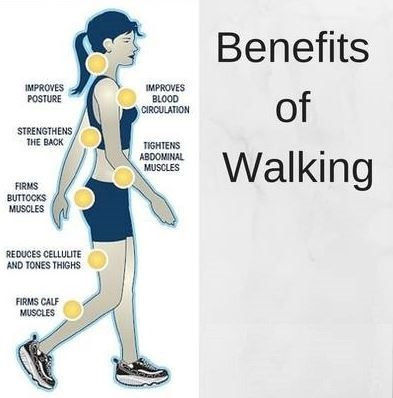As humans, we are designed to be up, walking, moving, and being active in some way. Our ancestors, the cavemen, were wired to hunt and gather food in order to survive, and our bodies are still wired in the same manner even today.
Living a sedentary lifestyle has long been associated with poor health and diseases; including heart disease, cancers, and diabetes. Over the past decade or two, obesity rates have spiked dramatically – leading to poor health and greater proneness to disease. With that said, health professionals have ventured to the novel fitness approach for good health and an active lifestyle: walking.
What can walking do for you:
Reduce your body weight
Walking is the first thing that anyone looking to lose weight should do. Not only is it an activity that you can do every day without causing the body exhaustion, but it is something that almost every adult can easily do. A one mile brisk walk should burn about 100 calories for the typical person, so if you walk three miles daily then you burn more calories. Plus, the longer time you spend walking, the shorter time you spend being sedentary.
Control your blood sugar
Diabetics are often left to manage the disease through proper dieting and plentiful physical activity. Studies have shown that a 20 minute walk after every meal can help to lower blood sugar levels that are known to spike after eating. Therefore, regular walks after meals can make a significant positive change in your sugar-level readings.
Improve your daily energy
The more you move your body the more energy you will get. When you consider the physiologic processes that occur in energy formation, you will notice that it is essential to keep moving. In simple terms, walking causes the enzymes in your blood and cells to speed up, which means that they become more efficient at making energy for you.
Improve your blood circulation
When your body is not active over a long time, there is a chance that you could develop poor circulation in parts of your body. This could lead to neuropathy. Neuropathy, a disease that is often caused by diabetes, is a condition wherein the nerves in peripheral parts of the body die. The feet are at greatest risk of this disease, which can lead to serious health complications; including disability, and a lifetime of other debilitating health problems.
Make you live longer
Exercise has long been associated with a reduction in all-cause mortality. This means that the more you exercise, the lesser your chances of dying of common causes of death. Now, that’s not a bad way to motivate someone to regularly exercise.

